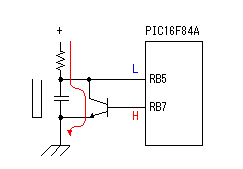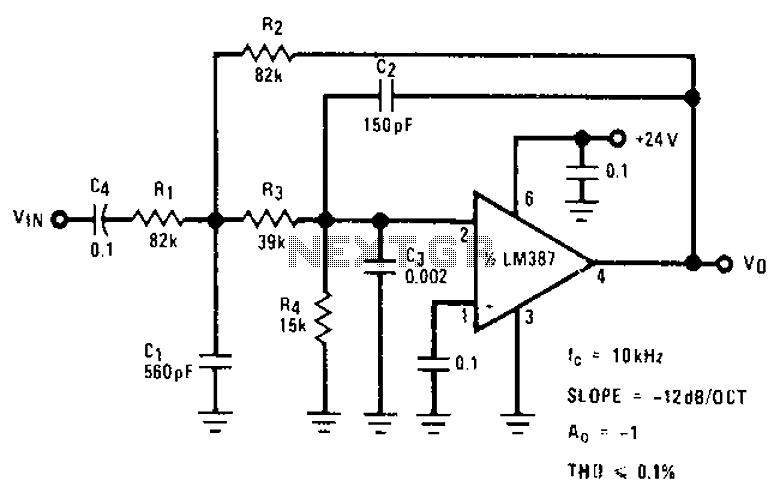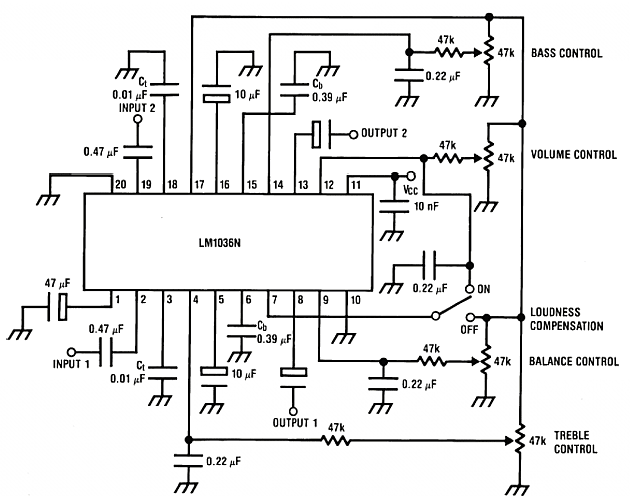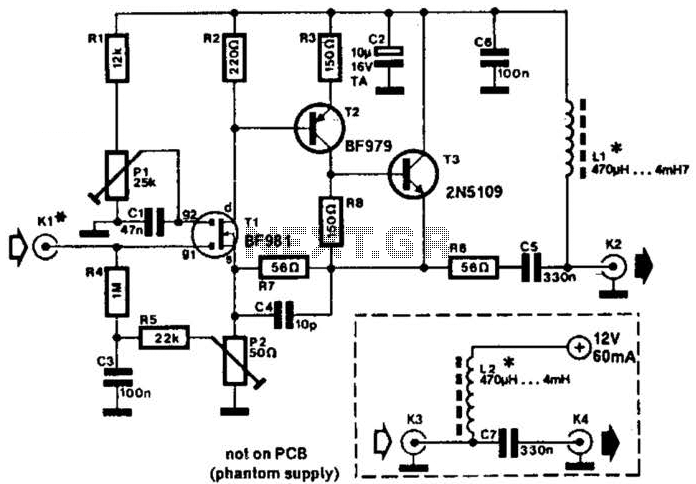
Melody Doorbell circuit
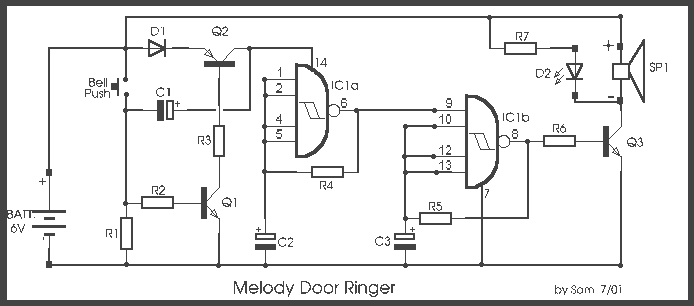
In all the houses exist the bells in the door. All want, they have the possibility of being possible to change the intensity, the tone of sound. With this circuit we have this possibility. With the materials round the gates, we can change the sound. For the materials that exist in the circuit the frequencies are roughly 5 KHZ and 2 KHZ. The circuit functions only for small time interval afterwards the pressure of switch. Simultaneously with the sound we have also optical clue from LED D2. Changing the capacitors C2-C3, with different price of capacity, we create new sounds.
The described circuit functions as a customizable doorbell system, allowing users to modify sound intensity and tone. The circuit operates primarily through a combination of resistors, capacitors, and transistors, which work together to generate different audio frequencies, specifically around 5 kHz and 2 kHz.
The circuit's operation begins when a switch is pressed, providing a momentary power supply to the system. This action triggers a sound output through an 8-ohm speaker (SP), which is connected to the circuit's output stage. The sound produced can be altered by changing the values of capacitors C2 and C3; larger capacitance values will typically lower the frequency, while smaller values will raise it, thus creating a range of different tones.
The part list indicates the use of various components, including resistors (R1-R7), capacitors (C1-C3), diodes (D1), an LED (D2), and integrated circuits (IC1). The resistors are of 1/4W rating and include values such as 470 kΩ (R1), 22 kΩ (R2), and 3.9 kΩ (R3), among others, which are crucial for setting the current levels in the circuit. The transistors BC550 and BC560 (Q1-Q2) are used for switching and amplification purposes, ensuring that the output sound is both audible and adjustable.
The LED D2 serves as an optical indicator, illuminating when the circuit is active, providing a visual cue that complements the auditory signal. The power supply for this circuit can be derived from four 1.5V batteries in series, totaling 6V, or from an external 6V DC power source, ensuring versatility in power options.
In summary, this circuit design emphasizes user customization of doorbell sound characteristics while providing both auditory and visual feedback through its integrated components. The ability to alter capacitor values allows for a wide range of sound outputs, making it a practical solution for personalizing doorbell tones.In all the houses exist the bells in the door. All want, they have the possibility of being possible to change the intensity, the tone of sound. With this circuit we have this possibility. With the materials round the gates, we can change the sound. For the materials that exist in the circuit the frequencies are roughly 5 KHZ and 2 KHZ. The circuit functions only for small time interval afterwards the pressure of switch. Simultaneously with the sound we have also optical clue from LED D2. Changing the capacitors C2-C3, with different price of capacity, we create new sounds. Part List R1=470Kohm C1=22uF 25V Q1-3= BC 550 R2=22Kohm C2=470uF 25V Q2= BC 560 R3=3.9Kohm C3=1 uF 25V BATT=4X1,5V or external pack 6Vdc R4-5=330 ohm D1=1N4001 SP= Speaker 8R /0,5W R6=2.2Kohm D2=LED RED 3mm R7=1.2Kohm IC1=7413 All Resistors is 1/4W 5% 🔗 External reference
The described circuit functions as a customizable doorbell system, allowing users to modify sound intensity and tone. The circuit operates primarily through a combination of resistors, capacitors, and transistors, which work together to generate different audio frequencies, specifically around 5 kHz and 2 kHz.
The circuit's operation begins when a switch is pressed, providing a momentary power supply to the system. This action triggers a sound output through an 8-ohm speaker (SP), which is connected to the circuit's output stage. The sound produced can be altered by changing the values of capacitors C2 and C3; larger capacitance values will typically lower the frequency, while smaller values will raise it, thus creating a range of different tones.
The part list indicates the use of various components, including resistors (R1-R7), capacitors (C1-C3), diodes (D1), an LED (D2), and integrated circuits (IC1). The resistors are of 1/4W rating and include values such as 470 kΩ (R1), 22 kΩ (R2), and 3.9 kΩ (R3), among others, which are crucial for setting the current levels in the circuit. The transistors BC550 and BC560 (Q1-Q2) are used for switching and amplification purposes, ensuring that the output sound is both audible and adjustable.
The LED D2 serves as an optical indicator, illuminating when the circuit is active, providing a visual cue that complements the auditory signal. The power supply for this circuit can be derived from four 1.5V batteries in series, totaling 6V, or from an external 6V DC power source, ensuring versatility in power options.
In summary, this circuit design emphasizes user customization of doorbell sound characteristics while providing both auditory and visual feedback through its integrated components. The ability to alter capacitor values allows for a wide range of sound outputs, making it a practical solution for personalizing doorbell tones.In all the houses exist the bells in the door. All want, they have the possibility of being possible to change the intensity, the tone of sound. With this circuit we have this possibility. With the materials round the gates, we can change the sound. For the materials that exist in the circuit the frequencies are roughly 5 KHZ and 2 KHZ. The circuit functions only for small time interval afterwards the pressure of switch. Simultaneously with the sound we have also optical clue from LED D2. Changing the capacitors C2-C3, with different price of capacity, we create new sounds. Part List R1=470Kohm C1=22uF 25V Q1-3= BC 550 R2=22Kohm C2=470uF 25V Q2= BC 560 R3=3.9Kohm C3=1 uF 25V BATT=4X1,5V or external pack 6Vdc R4-5=330 ohm D1=1N4001 SP= Speaker 8R /0,5W R6=2.2Kohm D2=LED RED 3mm R7=1.2Kohm IC1=7413 All Resistors is 1/4W 5% 🔗 External reference
